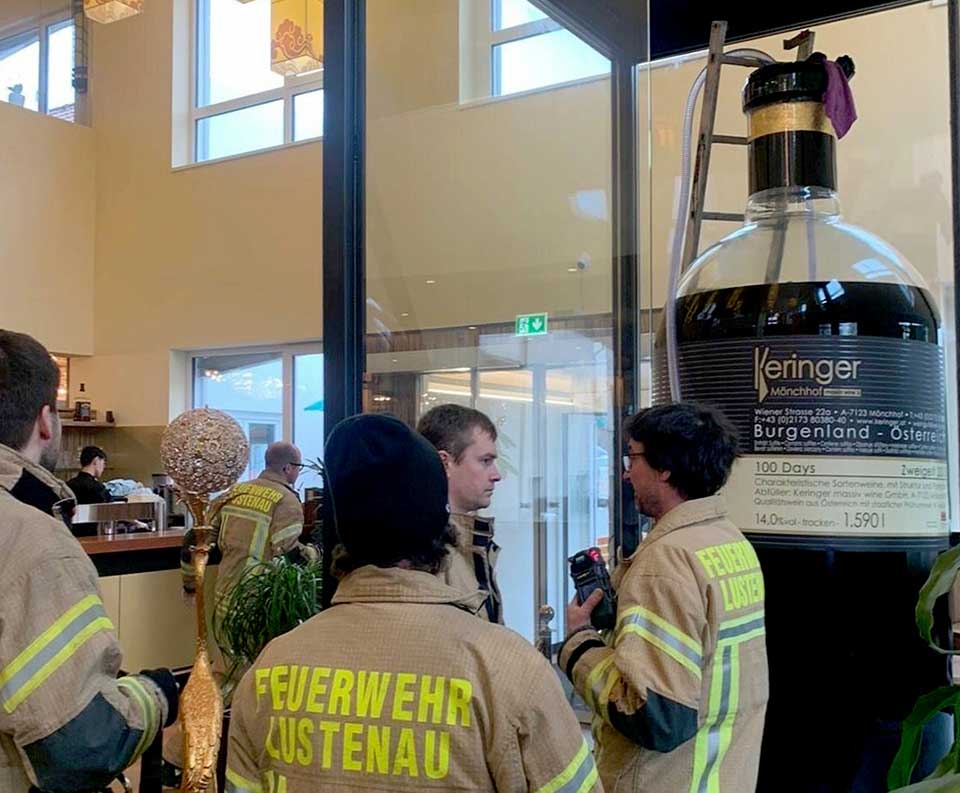
There are around 5,000 varieties of wine grapes, though only about 150 are planted in significant commercial quantities. The most widely-grown varieties in the world are Cabernet Sauvignon, Merlot, Airén, Tempranillo and Chardonnay.
A single bottle of wine contains the juice of 600 to 800 grapes.
One acre of vineyard (nearly 5,000 square yards) can contain 400 vines, which on average produce five tons of grapes.
Pinot Noir is considered one of the most difficult grapes to cultivate because it can be unstable and responds to weather variations or changes in soil conditions. The yield is also comparatively low, making it an expensive grape to grow.
Newly-planted vines need up to four to five years growth before they can be harvested.
“Old vines” are those aged over forty years but some are much older. Mature vines have deeper roots and are more stable. They produce wines of greater concentration, richer colour and more intense aromas.
Almost all grape vines are grafted on to American root stocks which are bred to be tolerant of soil conditions and pests such as phylloxera, a microscopic insect that can live among vine roots.
Better wine is produced by grape vines grown in relatively poor quality soil.
Grapes grown on clay-heavy soil produce bolder-tasting wines compared to those produced from grapes that grow on sandy soil.
Because of climate change, there are now vineyards as far north as Denmark, Norway and Sweden.
Grapes grown in the Southern Hemisphere are typically harvested between February and April. In the Northern Hemisphere, the grape harvest is during September and October. As a result, a 2010 Australian wine (for example) is six months older than a 2010 wine from Europe.
Grape juice is colourless. The colour of a wine is determined largely by the contact that the grape juice has with the skins.
Red wine is made from dark red, purple or blue grapes. White wine can also come from these grapes, but only if the juice is quickly separated from the skins.
We think of wine as being either red or white. It can also be purple, pink, yellow, green, gold, orange, brown or even blue. Many white wines are almost colourless.
Most wine is not vegan or vegetarian-friendly. “Fining agents” such as egg or fish bladder are usually used to remove unwanted elements that affect the appearance or aroma.
Hardly any wines actually taste of grapes. The most well-known exceptions are those made from Muscat or Concord grapes.
Red wine contains antioxidants. To get the same amount of antioxidants as a glass of red wine, you’d need to drink twenty glasses of apple juice or seven glasses of orange juice.
One glass of red wine contains about 90 calories, about the same as a slice of white bread. However, all wine is fat free and contains no cholesterol.
According to the Wine Institute, the Vatican City leads the world in wine consumption per capita. In other words, they drink more than the rest of us.
Males are less affected by alcohol than females. Enzymes are required in the stomach lining to break down the alcohol. The female body evidently contains fewer enzymes than that of the male.
Adding water to an ice bucket chills the wine faster than ice alone. The water increases the surface area contact, bringing the temperature down faster.
In the US State of Kansas, it is strictly forbidden to serve wine in tea-cups. In El Salvador, anyone caught driving under the influence of alcohol could be sentenced to death by firing squad.
European wines often state the region of production on their labels, whereas New World wines tend to state the grape variety.
There are about two dozen different bottle sizes and eleven standard bottle sizes, the smallest being the 187ml piccolo or split which is about a quarter of a standard 75ml bottle.
A magnum is not only a type of gun cartridge or a brand of ice-cream, but also the equivalent of two standard bottles. Many wine producers claim that it is the optimal size for aging champagne and quality wines.
Larger wine bottles intended to slow the ageing of a wine are traditionally named after biblical kings or other historical figures. The custom originated in Champagne during the 1700s with the creation of the Jeroboam (3 to 4 litres).
Larger sizes include the Methuselah (8 standard bottles); the Salmanazer (12 bottles); the Balthazar (16 bottles) and the Nebuchadnezzar (20 bottles).
Giant bottles are rarely seen but include the 35 litre Sovereign, created in 1988 by the champagne firm of Tattinger for the launch of the cruise liner, Sovereign of the Seas.
In 2017, the Engel Wang Fu Chinese restaurant in Lustenau, Austria briefly became the home to the “world’s largest glass bottle”. A German company took three years to make the ten-foot-tall bottle which held 1,590 liters (420 gallons) of wine. When it was filled with the Keringer award-winning 100 Days Zweigelt, the massive bottle weighed nearly two tons. Unfortunately it leaked. An entire team of fire-fighters and other volunteer helpers were hastily called in to clear up the mess.
Must read: Did you know? (Part 1)




